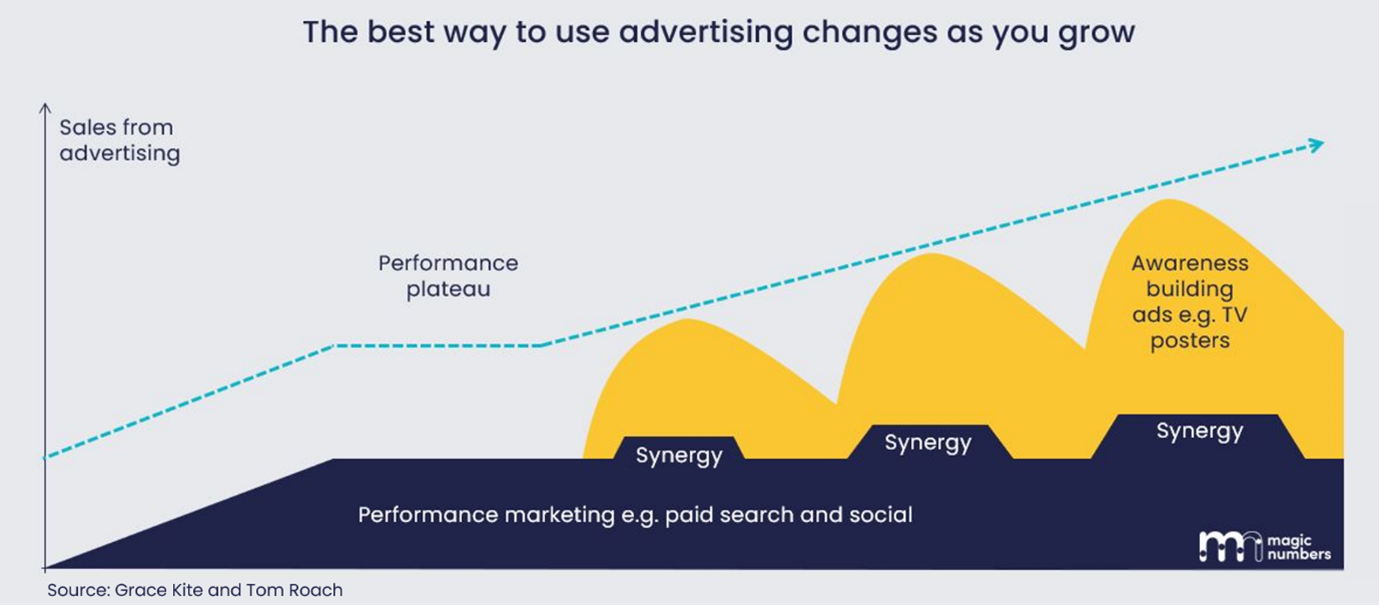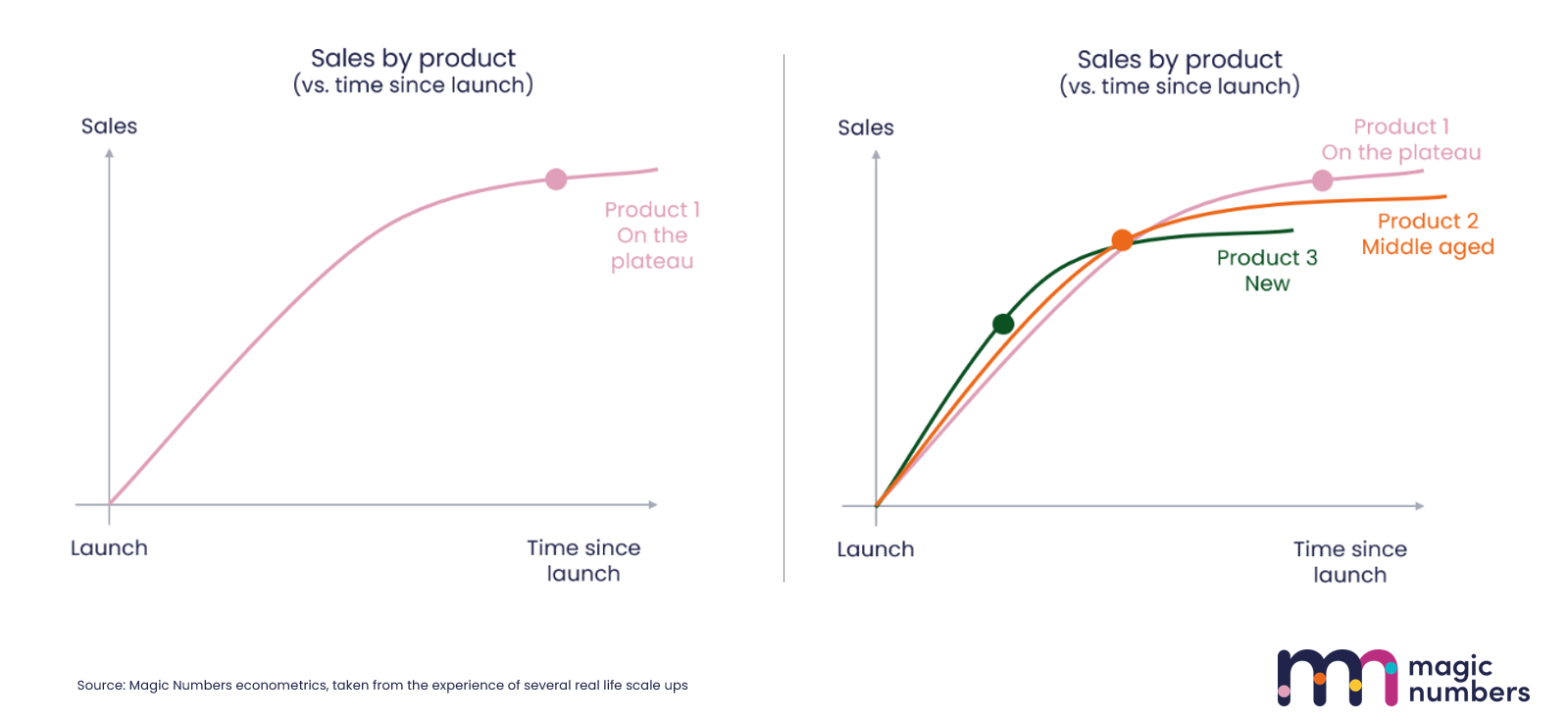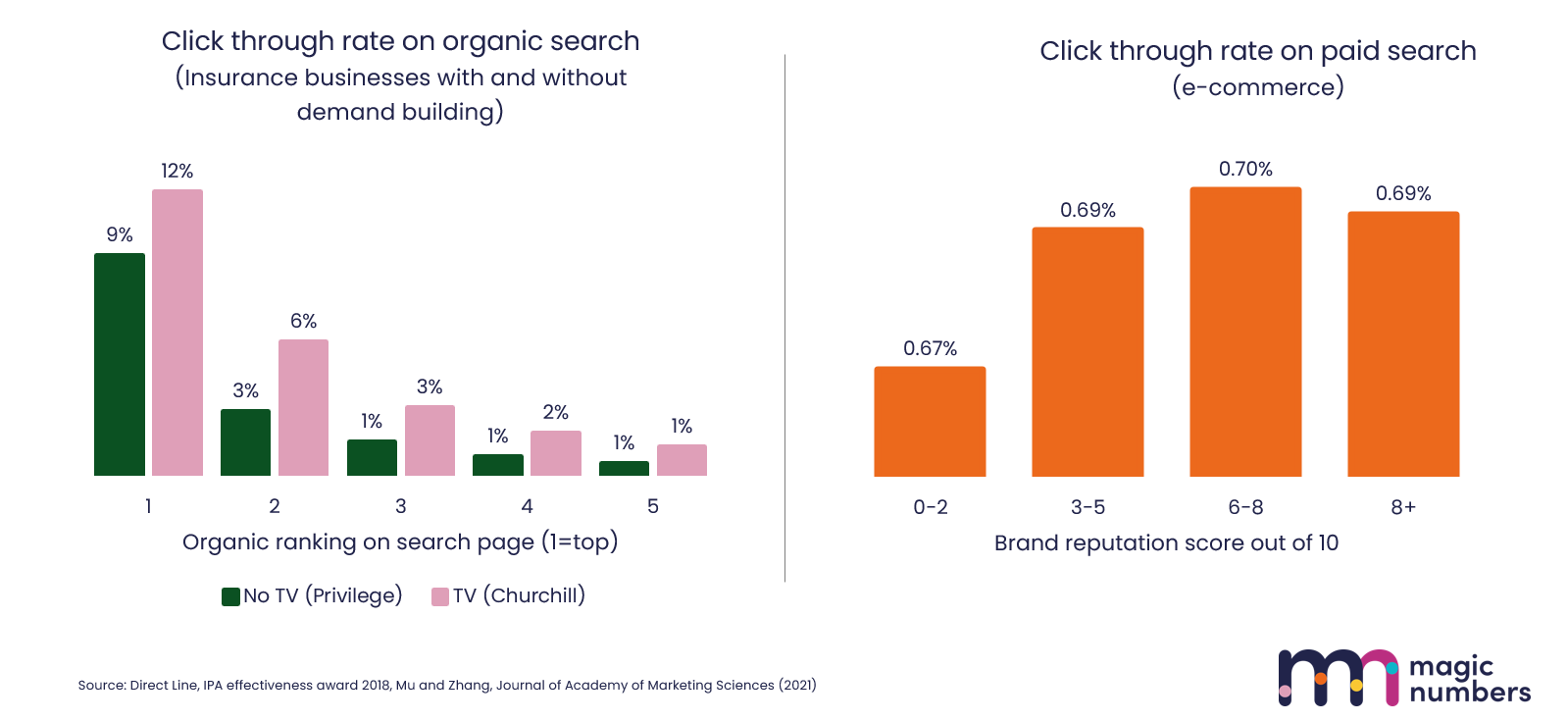There’s a reason why people are still talking about ‘The Long and The Short of It’ 10 years on. Why you still see marketing people clutching their weathered copy, now mottled by countless corner folds and coffee spots.
It’s because marketers still struggle to get their own mix of brand vs activation right. The theory is powerful, but it doesn’t change things on its own.
Putting theory into practice means combining it with your own data, and using the combination in a persuasive way. Too often, these steps are lacking, so theory takes pride of place on the shelf, but the business carries on as before.
Today many businesses have grown up online by scaling performance marketing. Their question is about whether and how brand building can help them maintain fast growth. They often consider first steps in brand building without the help of an agency and without massive budgets.
They have oodles of data, but the knotty problem remains. How to explain to people that are sceptical and how to prove to them it’s the right step, for this business, now.
Nobody listens
There is no doubt that theory has the power to inspire, motivate and transform. But, given the opportunity to talk, off the record, marketers say they take the lessons back to the business only to be frustrated. Senior colleagues don’t listen, they don’t believe, they see it all as “subjective”.
The quote below is one example of a sentiment that was expressed over and over again in interviews we at Magic Numbers carried out this year:
“Nobody listens. Because people just assume I want to spend more money. Well, yes, I do. But I’m not just doing it because I’m bored, am I? It’s because I know it’s going to work.”
We asked about how to overcome the problem, and people said two things are needed: The ability to speak persuasively and the skills to use data, evidence, and facts to make their case:
“What’s holding me back is the ability to talk persuasively about the reason for doing something. Why it’s wise, why it’s worth it, why it’s going to pay back.”
“I need to be able to use data to the level where I am confident going in and having a conversation with the CFO, and the director of pricing’. This is where the challenge lies.”
These are the problems that prevent businesses from adhering to the principles laid out in the teachings. They’re the blockers that mean many firms still underspend on brand building.
Get it right, but equally importantly, get it done
The first step for a business that’s grown up on performance marketing is recognising when it’s the right time for brand building, and then demonstrating that it’s time to senior leaders.
For businesses that have grown up online, the theory on this is embodied in the work Grace Kite and Tom Roach have done on the performance plateau, shown in the chart below.




